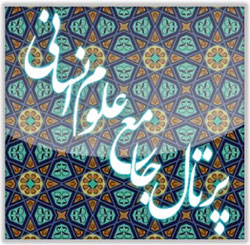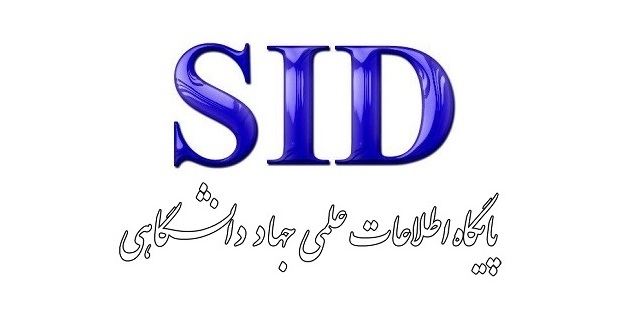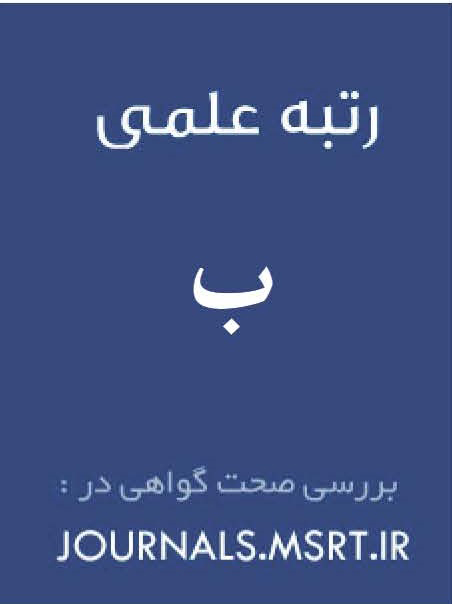Examining Male and Female Utopias and Their Confrontations in Six Contemporary Novels
Keywords:
male utopia, female utopia, gender confrontation, contemporary Iranian novelAbstract
This study explores the concept of male and female utopias and the confrontations between them in six contemporary Iranian novels. The male utopia is often depicted through symbols of traditional power, cultural identity, and resistance to modern social changes, whereas the female utopia emphasizes individual freedom, gender equality, and spiritual pursuit against social constraints. In The School Principal by Jalal Al-e Ahmad, the male utopia emerges in the struggle against a corrupt educational system and Western influence, confronting the crisis of cultural identity. In Mahmoud Dowlatabadi’s The Colonel, the 1979 Revolution is highlighted as a turning point of confrontation between ideological male utopias (military power) and female utopias (family relations and social change). Ahmad Mahmoud’s Scorched Earth presents the Iran–Iraq War as a field of gendered confrontation, where war propaganda strengthens the male utopia, but women’s suffering points to an alternative utopian vision. In contrast, women-centered novels such as Parinoush Saniee’s My Share examine the lives of generations of Iranian women under patriarchal structures and depict the female utopia through individual resistance. Shahrnush Parsipur’s Touba and the Meaning of Night combines history and mysticism to portray the confrontation between the traditional male utopia and the female spiritual quest in twentieth-century Iran. Finally, Simin Daneshvar’s The Wandering Island reflects the identity crisis of women in modern society, where the female utopia faces the challenges of social disorientation. This examination reveals that the confrontation of these utopias mirrors the social, political, and gender transformations of contemporary Iran and points toward the redefinition of collective identity.
Downloads
References
1. San'atizadeh Kermani. A Discourse Analysis of Utopia in Majma-e Divanegan: Faculty of Language and Literature; 2024.
2. Aramesh Mofrad Z, Seddighi B, Heydarian Shahri AR. A Comparative Study of Utopia in the Poetry of Zhalah Esfahani and Fadwa Tuqan. Journal of Comparative Literature Research. 2023.
3. Milani F. Zanan va Tasvir-e Zan dar Adabiyat-e Moaser-e Iran (Women and the Image of Women in Contemporary Iranian Literature). Tehran: Niloofar Publications; 2008.
4. Ahmadi J, Zamani S. A Study of Utopia in the Poems of Fereydoun Moshiri. Scientific-Research Journal. 2022.
5. Mohseni M, Golmohammadi M, Ghanipour Malekshah A, Rezvanian G. An Analysis of the Qabusnameh from a Positive Psychology Perspective. Journal of Persian Prose Studies. 2021.
6. Saffari MM, editor Utopia in Rumi's Masnavi. Seventh International Conference on Language, Literature, History, and Civilization; 2021.
7. Karimi Goleh N, editor A Study of Fiction Literature in Contemporary Persian Books. Sixth International Conference on Psychology, Educational Sciences, and Social Studies; 2023.
8. Shahsavari M. The Characteristics of Political Literature and Novels from the Viewpoints of Iranian Experts. Journal of Fictional Literature Research. 2024;13(4):93-119.
9. Alamdari M, editor Utopia in Utopian, Humanistic Thoughts. Civilica; 2024.
10. Sajjadi Moghaddam E. The Utopia of Authoritarian Iran: A Different Perspective on the Safavid Era from the View of French Enlightenment Philosophers. Journal of Political Thoughts. 2024.
11. Montazeri R, Khandal MJ. A Comparative Study of Utopia in Zoroastrianism and Confucian Thought. Bi-quarterly Journal of Comparative Religious Studies. 2021;6(11):3-22.
12. Nikpey N, editor The Concept of the City and Utopia in Ancient Iranian Myths. Seventh International Conference on Research in Science and Engineering and the Fourth International Congress on Civil Engineering, Architecture, and Urban Planning of Asia; 2022.
13. Khosravi M. The Reflection of Utopian Thoughts in Persian Literature. Tehran: SAMT Publications; 2022.
14. Habibi L. An Analysis of Female Identity in Simin Daneshvar's Novel Jazireh-ye Sargardani with an Existential Feminist Approach. Journal of Contemporary Iranian Fiction Research. 2023;8(2):93-107.
15. Zarei M. A Critical Analysis of Utopia in Jalal Al-e Ahmad's Modir-e Madreseh with an Emphasis on the Concept of Social Justice. Studies in Contemporary Iranian Literature. 2022;9(1):90-102.
16. Kakavand H. Identity, Land, and Utopia in Ahmad Mahmoud's Zamin-e Soukhteh. Literature of Resistance and War in Iran. 2023;3(2):99-115.
17. Salehi A. Mahmud Dolatabadi's Kelidar and the Death of Ideals: An Existentialist Reading. Thought and Contemporary Iranian Literature. 2022;8(2):49-60.
18. Eskandari H. The Conflict of Feminine and Masculine Utopias in Six Persian Novels. Journal of Comparative Literature Studies. 2023;5(3):101-15.
19. Yaqubi Z. The Feminine Perspective on Utopia in Three Contemporary Novels. Journal of Iranian Feminine Literature Research. 2022;1(2):85-93.
20. Haghshenas K. A Historical and Ideological Analysis in Contemporary Political Novels. Quarterly Journal of Literary Criticism and Iranian Thought. 2024;2(1):75-87.
21. Jafari M. A Feminist Reading of Fariba Vafi's Works with an Emphasis on Sara Mills' Theory. Quarterly Journal of Women's Literary Criticism. 2022;7(1):58-79.
22. Nosrati A. An Analysis of Narrative Structures in Contemporary Utopian Novels. Tehran: Institute for Humanities and Cultural Studies; 2023.
23. Sane'i P. Sahm-e Man (My Share). Tehran: Rouzbahan; 2010.
24. Parsipour S. Touba va Ma'na-ye Shab (Touba and the Meaning of the Night). Tehran: Qoqnous Publishing; 1990.
25. Daneshvar S. Jazireh-ye Sargardani (Island of Wandering). Tehran: Kharazmi Publishing; 1993.
26. Dolatabadi M. Colonel. Tehran: Cheshmeh Publishing; 2011.
27. Mahmoud A. Zamin-e Soukhteh (Burnt Land). Tehran: Moein Publications; 2001.
28. Al-e Ahmad J. Modir-e Madreseh (The School Principal). Tehran: Ferdous Publications; 1961.
29. Al-e Ahmad J. Modir-e Madreseh (The School Principal). Tehran: Ferdous Publications; 2008.
30. Fatouhi M. A Study of Female Discourse in Novels by Iranian Female Writers. Quarterly Journal of Literary Criticism. 2021;13(46):65-92.
31. Parsipour S. Touba va Ma'na-ye Shab (Touba and the Meaning of the Night). Tehran: Alborz Publishing; 2007.
32. Hosseini Z. The Representation of Feminine Utopia in Contemporary Fictional Works by Women. Journal of Contemporary Literary Criticism Research. 2022;9(2):43-72.
33. Maleki H. The Image of Man and Power in Contemporary Persian Stories. New Literary Criticism Studies. 2023(18):45-72.
Downloads
Published
Submitted
Revised
Accepted
Issue
Section
License
Copyright (c) 2025 مینا خالقی, فاطمه محسنی گرده کوهی, فاطمه حیدری, نسترن صفاری (نویسنده)

This work is licensed under a Creative Commons Attribution-NonCommercial 4.0 International License.








